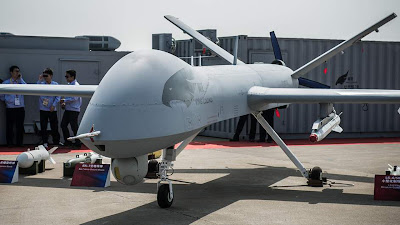Despite all the publicity that American UAVs receive, the major exporter of UAVs has been Israel. Between 2002 and 2012, Israel exported $4.7 billion worth of UAVs, approximately twice as much as the U.S. Part of this was due to the U.S. military demand for UAVs in Iraq and Afghanistan, which was largely met by American suppliers. But there were also U.S. government restrictions on American UAV exports. These restrictions still exist, for political reasons, such as prohibition of weapons sales to a long list of countries, and security fears.
These restrictions are becoming a major issue for U.S. UAV manufacturers because Israel already has a head start as an exporter, and China (using copies of many Israeli and U.S. UAVs) is catching up fast. The UAV market is expected to double to over $11 billion a year in the next decade and American firms have to export more in order to survive. The American military has cut purchases way back and will not be buying much for the next five years to come or more.
It’s understandable that the Israelis are leading exporters, as they developed most of the basic technology that made the best-selling American models like Predator and Raven possible. Israel kept developing UAV tech after successful American designs appeared. As a result of this trend, in the last decade nations have found that if they wanted American style UAVs very often they were unable to buy American for whatever reason but the Israelis probably had whatever they needed, with less restrictions and often at a better price.
Israel has UAVs similar in capabilities to many of the U.S. made ones, and in many cases the Israeli versions were there first. But that won’t do much good with the Chinese closing in.
These restrictions are becoming a major issue for U.S. UAV manufacturers because Israel already has a head start as an exporter, and China (using copies of many Israeli and U.S. UAVs) is catching up fast. The UAV market is expected to double to over $11 billion a year in the next decade and American firms have to export more in order to survive. The American military has cut purchases way back and will not be buying much for the next five years to come or more.
 |
| CH-4 |
It’s understandable that the Israelis are leading exporters, as they developed most of the basic technology that made the best-selling American models like Predator and Raven possible. Israel kept developing UAV tech after successful American designs appeared. As a result of this trend, in the last decade nations have found that if they wanted American style UAVs very often they were unable to buy American for whatever reason but the Israelis probably had whatever they needed, with less restrictions and often at a better price.
Israel has UAVs similar in capabilities to many of the U.S. made ones, and in many cases the Israeli versions were there first. But that won’t do much good with the Chinese closing in.




No comments:
Post a Comment